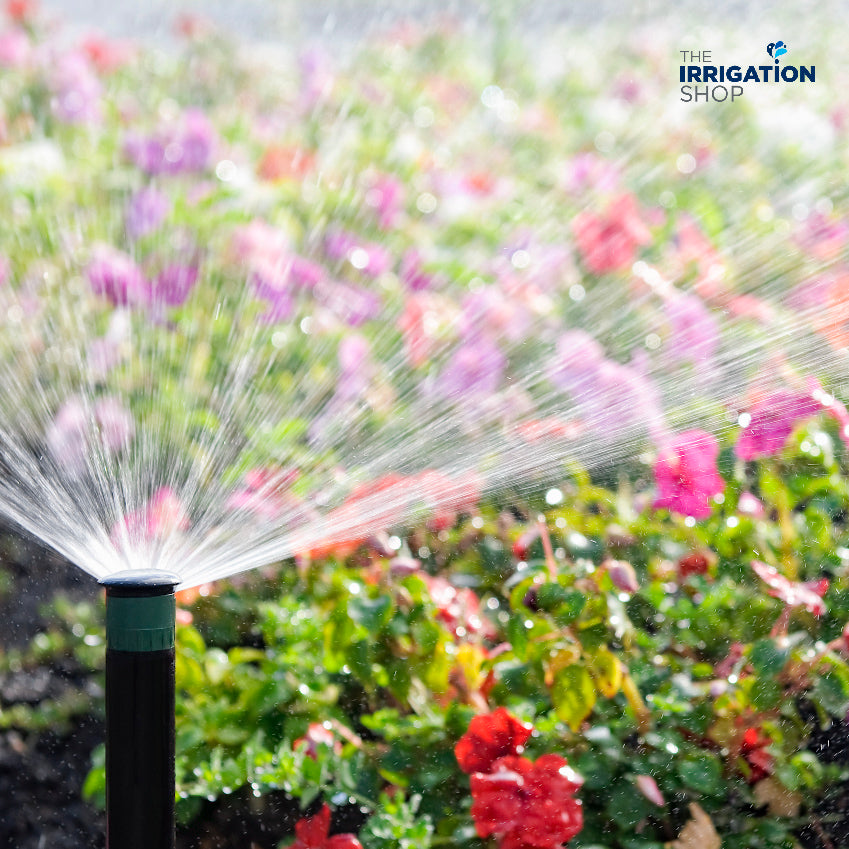How to Optimise Your Domestic Irrigation System for Different Plants
Keeping your plants watered regularly will help ensure that they’re green and healthy for years to come. While all plants need water, much like people, some are definitely a lot thirstier than others. If you have an irrigation system for your garden (or if you are considering installing one), you should ensure that it is optimised to suit the different types of plants. Here at the Irrigation Shop, we’ve created this handy guide to help you with optimising your irrigation system for this purpose.
Why Optimise Your Irrigation System for Different Types of Plants?

The main reason that you should optimise your irrigation system for different types of
plants is the risk of over or underwatering them, which can cause a wide range of
health issues. Optimising will also help you save on watering costs down the line,
ensuring that you only water plants when they need it. Read on to find out the watering
needs of various styles of plants:
• Australian Native Plants
Many native Australian plant species are uniquely adapted to Australia's arid climate. Overwatering can lead to root rot and other diseases, so an optimised irrigation system is crucial. Some native plants however are from more temperate or tropical climates and need more water. Make sure to check if this is the case before planting them next to each other.
• Drought Resistant Plants
Just as the name suggests, drought-resistant plants are adapted to withstand periods of low moisture. Ensuring you don't overwater these plants allows them to leverage their unique drought resistance capabilities.

• Non-Native Plant Species
Non-native species often require more frequent watering or higher water volumes than native or drought-resistant plants. Tailoring your irrigation to their specific needs is vital for their health and growth.
• Types of Grass
Having a nice green lawn is the dream for many homeowners but different types of grass also have different watering requirements. For example:
• Buffalo Grass: Perfect for low-maintenance gardens, Buffalo grass withstands drought and thrives on infrequent, deep watering.
• Zoysia Grass: This grass needs more frequent watering than Buffalo grass but uses less water in total.
• Couch Grass: Thrives when watered deeply 1-2 times a week during hot and dry periods.
• Kikuyu Grass: Requires regular and deep watering to maintain its vibrant green hues.
• Tall Fescue: Needs regular watering to keep its lush appearance, especially during hotter months.
Techniques for Optimising Your Irrigation System for Different Plant Types
Knowing when it's time to replace your home water pump is crucial for maintaining
efficiency. You should consider these factors:

Zoneage
The first step towards optimising your irrigation system involves your plants
themselves. If you haven’t already, you should strongly consider planting/replanting
plants with similar watering needs next to each other so that your irrigation system can
be fine-tuned to deliver the right amount of water in that area. The placement of your
plants should form zones where irrigation methods, frequency and volume can be
adjusted to suit requirements.
Irrigation Controllers
Modern irrigation controllers provide the ability to customise watering schedules for
different zones in your garden. By setting specific timings and frequencies, you can
ensure that each plant gets an appropriate amount of water. We have a range of
irrigation controllers available here.
Drip Irrigation
This method delivers water straight to the plant's root zone. Drip irrigation reduces
evaporation and ensures that each drop counts. This method can be particularly
beneficial for plants with specific watering needs, as the volume of water delivered can
be controlled. You can find our range of drip irrigation products here.
Soaker Hoses
Useful for dense plantings, soaker hoses slowly "weep" water straight into the soil
around your plants. This provides a deep watering effect right where your plants need
it most.
Rotating Sprinkler Systems
Ideal for watering large areas of lawn or big patches of specific plants, rotating
sprinkler systems mimic natural rainfall. Adjustments can be made to control the range
of water distribution. You can buy a range of rotating sprinklers from us here.
Soil Moisture Sensors
These tools measure the water content in your soil, providing real-time data that can
inform your watering schedules. By pairing these sensors with your irrigation controller,
you can automate your watering based on actual soil moisture levels. We have a
range of sensors for sale here.
Cover and Protect
Once the system is tested and functioning correctly, bury the pipes underground or cover
them with mulch to protect them from damage and improve the appearance of your
garden.


